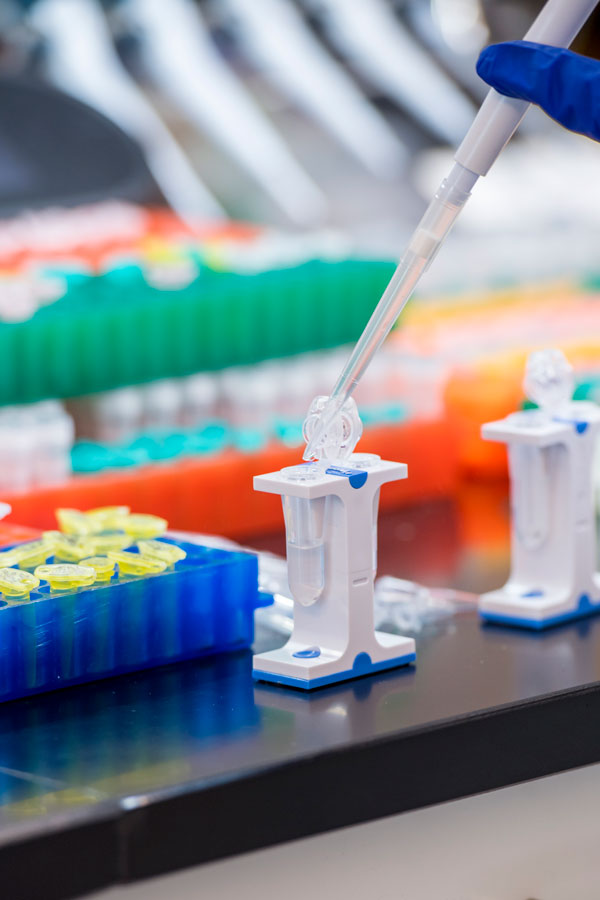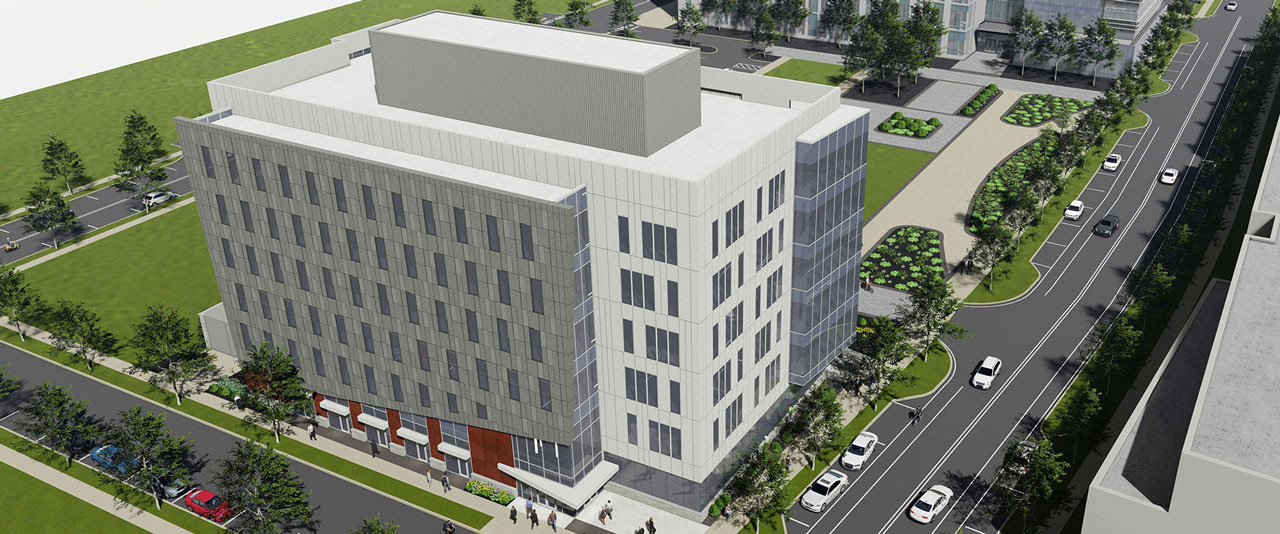
Technology Transfer Process: FAQ
You have a novel idea, invention or technology that you think has societal benefit and is marketable.
The first step in safeguarding intellectual property resulting from UD related work is to file an invention disclosure. Filing a disclosure protects the rights, prior to publishing or presenting, and allows you to continue your research with additional developments.
The Invention Disclosure Form begins the process of bringing your innovation to life. In the meantime, the information below can help you understand the technology transfer process and how it facilities commercialization of your innovation.
Bringing Your Innovations to Life
Read about the different phases and actions related to the commercialization process.

Members include representatives of the OEIP Technology Transfer Associates and the DE Small Business Development Center, who partner with University Innovators to provide mentorship throughout the commercialization experience.
The Commercialization Committee supports the innvovator(s) from the point of disclosure and continues through an iterative process of feedback and support. The committee will assist in assessing and developing a commercialization strategy and potentially pursue, at no cost to the innovator, patent(s), license agreements with established companies and/or start-ups.

Research
A novel idea is developed or a laboratory discovery is made that solves a problem and shows a potential societal benefit.
SUBMIT
EVALUATE
PROTECT
Market
LicensE
Commercialization
Commercializing is a process of advancing ideas, research, and concepts into viable products that obtain marketplace acceptance, adoption, and ultimately generate a financial return. Additional benefits provide a vibrant UD community for researchers, and public trust.
STARTUP COMPANY
ESTABLISHED COMPANY
Frequently Asked Questions
You should contact the UD Technology Transfer Office (TTO) whenever you believe you (may) have made an invention or created something of commercial value. It is important to contact the TTO before any public disclosure is made so we can advise you on steps to protect your intellectual property rights.
Another reason to contact us is if you receive an inquiry from a third party interested in a license, material transfer, or any questions regarding the invention.
To commercialize inventions, UD invests considerable time and financial support to protect university inventions through patents and other intellectual property protection, such as copyrights and trademarks. The TTO works to license the University’s intellectual property to third parties or faculty/student business ventures.
In addition to the satisfaction, you gain from your invention's impact on society and through new external relationships that can lead to further research partnerships and support, a portion of the financial benefits UD receives through commercial activities will be distributed to you as the inventor(s). Other portions are distributed to your college(s) and department(s).
See University policy section 7. Division of Income: https://sites.udel.edu/generalcounsel/policies/intellectual-property-protection-ownership-and-commercialization/
Per University policy, Intellectual Property created at UD is owned by UD with benefits to inventors, colleges, and departments.
See University Policy section II.A. https://sites.udel.edu/generalcounsel/policies/intellectual-property-protection-ownership-and-commercialization/
Inventions must meet the following criteria to be patentable:
· Useful - the invention is functional and beneficial.
· Novel - the invention is not previously known “to the public.”
· Non-obvious - the invention would not be considered obvious by someone “having ordinary skill in the art.”
Technology Transfer Associates and our patent counsel work with inventors to address these criteria and develop a strategy for a patent application filed with the US Patent and Trademark Office (“USPTO”) and international patent authorities as appropriate. The USPTO and other patent offices around the world make the actual determination of patentability.
Patent examiners consider only those who have contributed to the “inventive process” to be inventors.
When submitting an invention disclosure to the TTO, it is appropriate to name anyone who contributed to the invention as a potential inventor. Our patent counsel determines legal inventorship based on analysis of the claims in the filed patent application. Proper identification of inventors is important, because failure to name all inventors or listing persons who did not contribute to the “inventive process” may invalidate the patent or patent application.
Your responsibility as an inventor is to help the TTO protect and commercialize your invention by:
- Fill out the Invention Disclosure Form accurately and completely as possible (contact TTO for assistance), including any companies or outside contacts who may be interested in commercializing the invention.
- Being timely and responsive to requests from the TTO and outside counsel, as patent applications are processed according to a strict timeline.
- Keeping the TTO updated on upcoming publications or other public disclosures (including other company discussions).
It’s never too early to talk with the TTO. Reach out as soon as you think you have an invention.
You are the expert in the field, and the TTO needs your help.
The Commercialization Committee, comprised of the Technology Transfer Office, colleagues from the Small Business Development Center, and Horn Entrepreneurship, all with technology commercialization experience, assesses every invention disclosure after a thorough discussion with the inventors at a committee meeting. The Committee recommends an intellectual property protection strategy, including determining whether a patent application should be filed.
The entire process varies for each patent application. It can take three to six years to issue or receive a final rejection by the US Patent and Trademark Office and worldwide patent authorities.
YES! Please contact the Technology Transfer Office as early as possible before publication, presentation, delivery of a process/product under contract, or public thesis defense to preserve broad patent rights. Although the United States allows a one-year grace period from the date of public disclosure to the filing of a patent application, most other countries do not permit filing after a disclosure.
Note that an internal/UD thesis defense and research grant proposals are generally not considered public disclosures until and unless they are posted and available to the public for review. For example, if your thesis defense is open to the public, with no confidentiality agreements in place, and your invention was described in detail, then a public disclosure likely occurred.
Please get in touch with TTO with any related questions.
CDAs are legal agreements created for the protection of proprietary information. A CDA is necessary before any transfer of proprietary information from one party to another occurs. It is critical to contact the Technology Transfer Office before disclosing any information about an invention or potential invention to an outside party.
Please contact the Technology Transfer Office before disclosing any details to the company. We will work to ensure that a Confidential Disclosure Agreement (CDA- see FAQ) is executed that will protect potential patent rights. The Technology Transfer Office can facilitate discussions regarding patent licensing and/or support for continued research related to your inventions with companies and/or other third parties.
An MTA is a contract that governs the transfer of tangible research materials between two organizations, when the recipient intends to use it for his or her own research purposes. The MTA defines the rights of the provider and the recipient with respect to the materials and any derivatives.
An MTA may be appropriate when sending, receiving, or exchanging research materials, such as samples or devices, with parties outside UD.
Please get in touch with the Research Office for assistance with MTAs, please see: https://my.udel.edu/collection/all/webforms
Please get in touch with TTO with any related questions.
An available online inquiry request form is available
Current News and Stories
-
The UD OEIP, Technology Transfer Office, Is Ready To Assist
April 01, 2024 | Written by OEIP StaffThe Office of Economic Innovations and Partnerships (OEIP) serves the University by connecting faculty innovators and entrepreneurs with collaborators and partnerships outside UD through its Technology Transfer Office. -
Accelerating Translational Research
February 21, 2024 | Written by Erica K. Brockmeier | Photos by Evan Krape and Kathy F. AtkinsonUniversity of Delaware receives $6 million from the National Science Foundation as part of the inaugural translational research funding program. -
SUPPORTING BIOMEDICAL ENTREPRENEURS
August 30, 2023 | Written by Karen RobertsOffice of Economic Innovation and Partnerships collaborates on NIH-funded online educational platform, training

